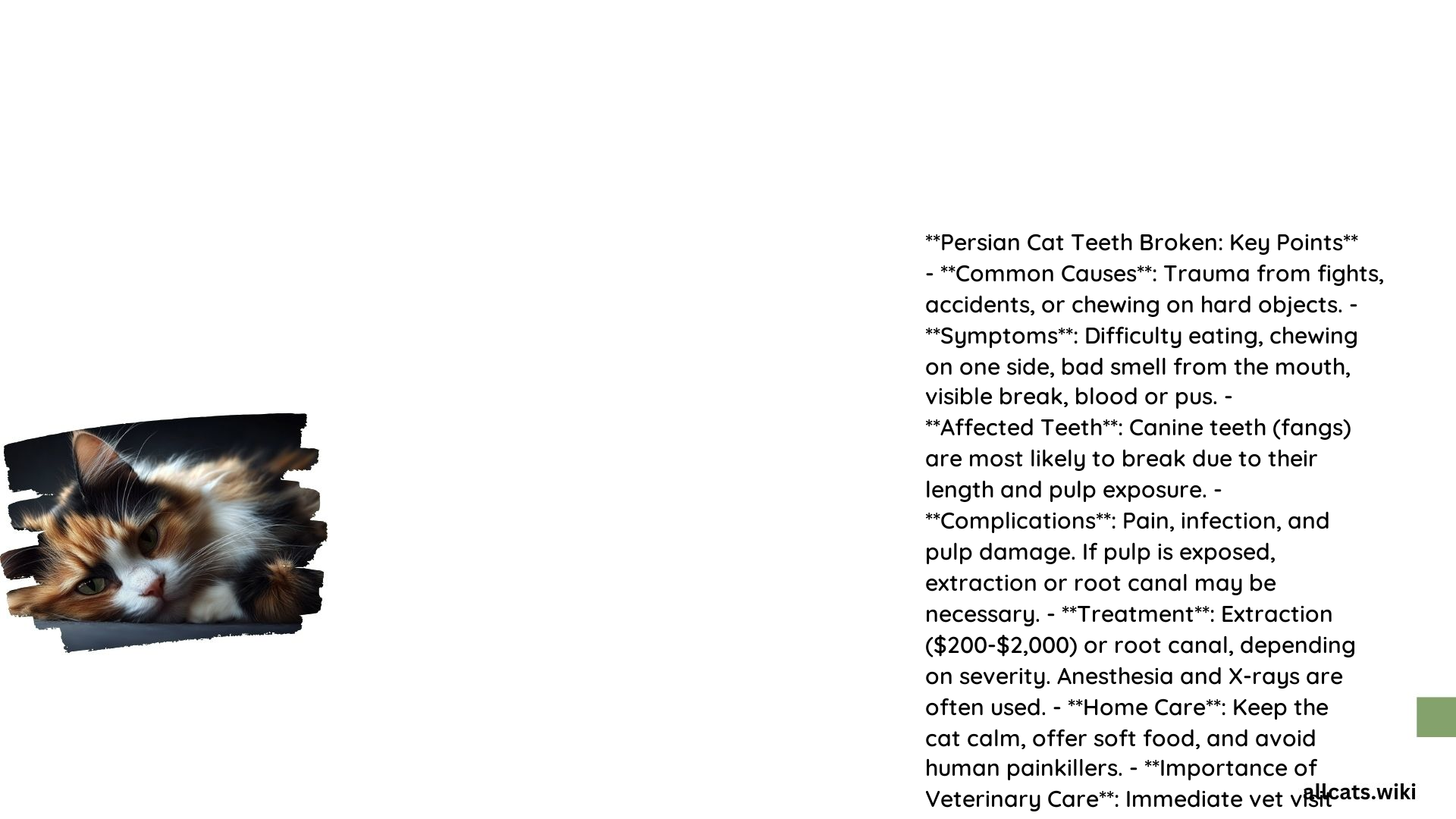Persian cats, due to their unique facial features, are prone to various dental issues, including broken teeth. As a pet owner, it’s crucial to be aware of the common signs of a broken tooth in your Persian cat and the available treatment options to ensure their overall well-being.
What are the Common Signs of a Broken Tooth in a Persian Cat?
- Changes in Eating Habits:
- Difficulty Eating: Your Persian cat may have trouble chewing their food, often trying to eat on one side of their mouth to avoid the broken tooth.
- Food Falling Out: You may notice your cat’s food falling out of their mouth while eating, indicating pain or discomfort.
-
Preference for Soft Food: If your Persian cat suddenly starts preferring wet or soft food, it could be a sign that they are trying to avoid chewing due to tooth pain.
-
Excessive Drooling:
-
Excessive drooling can be a clear indication of dental pain or discomfort, including a broken tooth.
-
Behavioral Changes:
- Reduced Appetite: Your Persian cat may show a decreased appetite due to the pain associated with chewing.
- Weight Loss: Over time, the reduced appetite can lead to weight loss.
-
Grooming Less: Cats in pain may groom themselves less frequently.
-
Visible Signs:
- Visible Tartar: You might notice visible tartar buildup on your Persian cat’s teeth.
- Bleeding, Swollen, or Red Gums: These are signs of infection or underlying dental disease.
-
Wobbly or Missing Teeth: A broken tooth may appear shorter, have a missing section, or be unstable.
-
Other Symptoms:
- Bad Breath: Halitosis (bad breath) can be a sign of dental issues in your Persian cat.
- Pawing at the Mouth: Your cat may paw at their mouth or teeth due to the pain caused by a broken tooth.
How Can You Prevent Dental Disease in Persian Cats?
- Dental Care Routines:
- Regular Brushing: Brush your Persian cat’s teeth regularly to remove plaque and tartar. Use a cat-specific toothbrush and toothpaste.
-
Dental Chews and Toys: Provide your cat with dental chews and toys to help reduce tartar buildup.
-
Recommended Products:
- Cat-Friendly Mouthwash: Add pet-friendly mouthwash to your Persian cat’s drinking water to help reduce plaque.
-
Dental Gels: Use dental gels that contain enzymes and mild abrasives to prevent plaque buildup.
-
Dietary Considerations:
- Dental Diets: Feed your Persian cat a dental diet that is designed to help reduce tartar and plaque. These diets often have a unique texture that helps clean the teeth as the cat chews.
- Avoid Hard Objects: Ensure your Persian cat does not chew on hard objects that could potentially break their teeth.
What are the Treatment Options for a Broken Tooth in a Persian Cat?
- Assessment by a Veterinarian:
-
The first step is to have your Persian cat assessed by a veterinarian to determine the extent of the dental damage.
-
Treatment Based on Severity:
- Minor Chips: If the break is minor and only cosmetic, it might not require immediate treatment. However, it is still important to have your vet examine the tooth.
- Exposure of Pulp: If the pulp (the inner, sensitive part of the tooth) is exposed, immediate veterinary treatment is necessary to prevent infection and pain.
-
Surgery: In severe cases where the tooth is badly broken or infected, surgery to remove the tooth may be necessary.
-
Procedures and Costs:
- Extraction: The cost of extracting a broken tooth can range from $200 to $2,000, depending on the complexity of the procedure and the need for anesthesia and hospitalization.
-
Restorative Procedures: For less severe breaks, restorative fillings might be an option, though this is less common in veterinary practice.
-
Recovery and Follow-Up Care:
- Post-Surgery Care: After surgery, your Persian cat will need time to recover. Follow your veterinarian’s instructions for post-operative care, which may include pain medication and a soft food diet.
- Regular Check-Ups: Regular dental check-ups are crucial to monitor the health of your cat’s remaining teeth and prevent future dental issues.
By being aware of the common signs of a broken tooth in your Persian cat and taking proactive steps to maintain their dental health, you can help ensure their overall well-being and prevent the need for more extensive and costly treatments.

